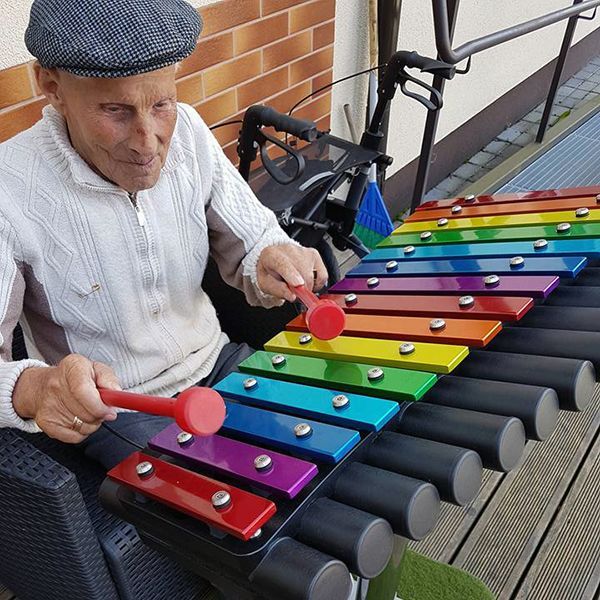
Let's Jam
Simply enter your name, email address, and click subscribe to get the latest product updates.
By clicking "Subscribe", you confirm that you have read and accepted our Terms and Conditions, Privacy Policy and Cookie Policy.
Mental Health Awareness Week runs from 9-15 May, and the theme for this year’s event is ‘Together We Can Tackle Loneliness' - raising awareness of the impact of loneliness on our mental health and the practical steps we can take to address it.
Music has always been a powerful way to bring people together, and Percussion Play has a vision to create inclusive musical oases in towns and cities worldwide to encourage us to connect.
Public spaces - being a place of free and open access - are traditionally linked to social, cultural, or economic exchanges, and are once again gaining increasing importance as a component of everyday quality of life, especially in urban areas. Loneliness and disconnection are on the rise, exacerbated by social distancing and the disruption of daily routines, and those disconnections manifest themselves in other health issues for individuals, including depression. Many see loneliness as one of the most significant health concerns we face this century, and the importance of social connection and relationships has been brought into sharp relief by the Covid-19 pandemic.
Growing public attention to loneliness in our communities has been accompanied by designers and landscape architects beginning to challenge traditional modes of play and playground design and extend the role of open play spaces to include a range of different social agendas, including combating loneliness in all ages. The provision and use of these public open spaces (including privately owned spaces with areas for public use, such as shopping malls and public libraries) can have an essential role in promoting social cohesion, intergenerational connections, and opportunities for shared creativity.
Historically, we have divided our communities and activities by ethnicity, language, age, and ability. Still, the potential for the hybridization of play spaces, where the spatial boundaries between adults and children’s activities merge, can result in innovative and uplifting settings that encourage connections and help secure a community's future prosperity. A straightforward way to make this happen is by introducing outdoor musical instruments. Making music brings people together like nothing else. Offering quality musical opportunities - on real instruments – for spontaneous music-making provides an engaging experience where nobody is excluded from the fun, whether their ability, mobility, or age.
The notion of intergenerational activity and play has increasingly drawn attention over recent years, and a growing body of scholarly literature has begun to point more and more toward the premise that when adults and, in particular, seniors become involved in cross-generational learning activities with children and adolescents, huge benefits are accrued by both parties. Adding intergenerational play elements such as outdoor musical instruments to public spaces encourages connectivity, and due to its universal appeal, playing music can successfully bridge intergenerational gaps. The combined effects of musical play and intergenerational social participation have proven to be incontrovertibly beneficial for the improvement and maintenance of both the physical and mental health of seniors. Given the opportunity to participate, regardless of physical or psychological impairments, intergenerational musical play in public spaces can serve as a productive, meaningful, and financially accessible activity for them.
Music can bring a diverse group of people together in the community because it transcends language limitations - instead providing its language of rhythm and melody to enable its players and users to communicate with each other non-verbally. Providing opportunities for community members to be around each other promotes familiarity and the formation of healthy relationships and helps to engender a sense of belonging for those who participate. It is apparent then that music can help us develop a more cohesive society if access to it is provided and engagement promoted.
This growing body of emerging research is starting to relate music-making with place-making, specifically with creating an authentic community and breaking down stereotypes while simultaneously working to improve participants' cognitive function, emotional capacity, and physical well-being. Just as public music spaces bring people together and create a sense of civic vitality for communities, it’s also restorative for the individual. While the pandemic has created enormous challenges, it has also potentially brought about positive change. The isolation it provoked was a good reminder of how much we need others — and places in which to be together — even in less trying times. Community wellbeing in the future depends on our taking a more joined-up harmonious approach to the use of public space, and perhaps a little more music in the public realm could be the stimuli for positive community relations and a little less loneliness.
For further reading see our White Papers: